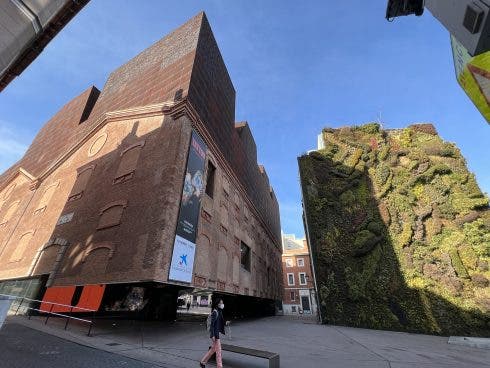THEY have been working together since 1978 and grafted on a staggering 600 projects in 40 countries around the world.
So it’s perhaps not surprising that a key British institution has chosen to honour the work of Jacques Herzog and Pierre de Meuron.
In a much anticipated show, London’s Royal Academy will present a detailed exhibition on 45 years of work of Swiss firm Herzog & de Meuron.
They’ve reimagined the nature of buildings, from houses to hospitals. And they’ve designed projects that have transformed cities, such as the Tate Modern, in London, Elbphilharmonie, in Hamburg, and M+ in Hong Kong.
The architectural wizards, based out of Basel, are among the most respected design duo of all time and fortunately Spain has been graced with their ‘architectural art’ in no less than five jaw-dropping feats.
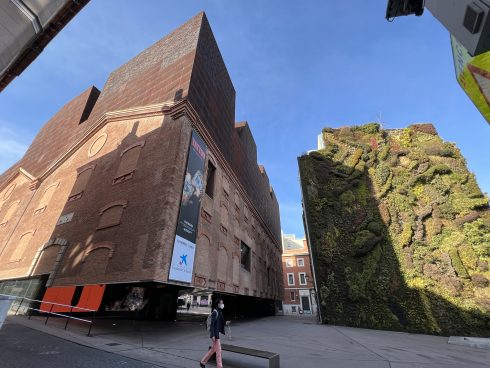
Madrid’s CaixaForum is an encounter of historical eras, blending the city’s industrial past with modern clean lines.
The Swiss maestros were tasked with the building of a cultural space that would replace an old fire damaged power station.
Given the protected status of the building, its industrial age façades had to be retained.
So the team cleverly gutted the power station and elevated it above ground level, in what can only be described as an optical illusion.
The result is an incredible open air space held up by a central metal structure allowing visitors to enjoy some shade in an open air space next to Madrid’s famous Paseo del Prado.
Above, the historical body is crowned with brick coloured iron panels.
Meanwhile, next to the forum, that also descends underground, is a wall of cascading foliage bringing together nature, history and modernism in one seamless sweep.
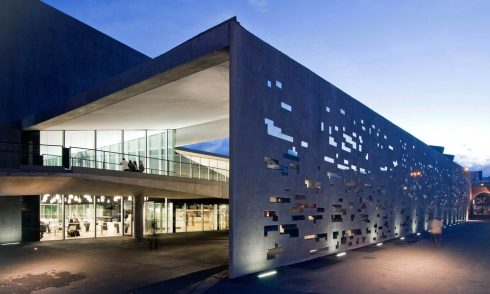
Art is at the heart of the firm’s practice and the pair have designed multiple galleries and museums during their impressive tenure, including the Laban and Tate in London.
In Tenerife they headed up the design team for the Espacio de las Artes, a low lying and jagged dark concrete behemoth which from the outside appears windowless and imposing.
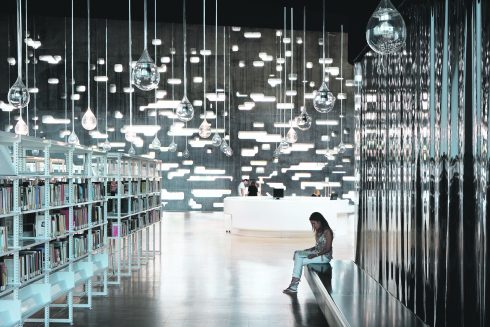
Walking through its courtyard, glass façades flood the building with light and on their opposing walls a series of morse code-like slits fragment the light in a scintillating dance as it bounces off the glossy flooring.
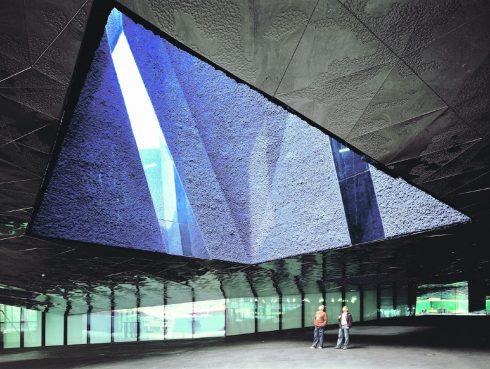
A section of Barcelona’s cityscape that was once known as ‘no-man’s land’ was completely revitalised by the construction of the standout Forum of Cultures building.
Its apparent gravity defying, material blending structure is shaped as an equilateral triangle. Deceptively, the colossal building appears to hover some 25 metres above the ground.
The pair opted to use a deep blue rough concrete as the predominant material, an ode to the coastal city, taking inspiration from coral reefs.
Breaking up the concrete mass are shard-like windows that cut through the prism. Underneath, visitors can look up to wavy mirrors that emulate a sunlit sea.

Not limited to buildings, the company was chosen to design Burgos’s boulevard which runs along a disused railroad.
Realising the inevitable expansion of the city, the architects wanted to create a space that was timeless, practical, green and unique.
The winding street gives priority to pedestrians incorporating wide footpaths dotted with central-park style benches and accessorised by shrubbery.
Bus stops along the street resemble grounded spaceships while streetlights drop like dew from a crisscross of overhead power lines.
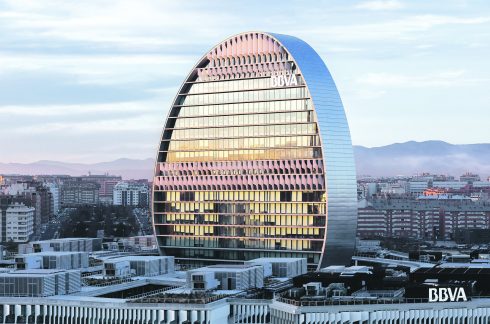
The headquarters of Spain’s second largest bank, BBVA, was designed by the renowned pair back in 2007 and eventually got dubbed ‘the sail’.
The BBVA City has a plaza in the middle from which the large reflective high rise emerges.
The main attraction is its looming centrepiece which takes the form of a misshapen oval and is contrastingly surrounded by the straight lines of three-storey office buildings.
Windows have brise-soleils each uniquely positioned to allow light into the buildings while providing shade and privacy, the white panels against the reflective glass resemble a sailing regatta, which juxtaposes the business dealings of its internal workings.
READ MORE:

